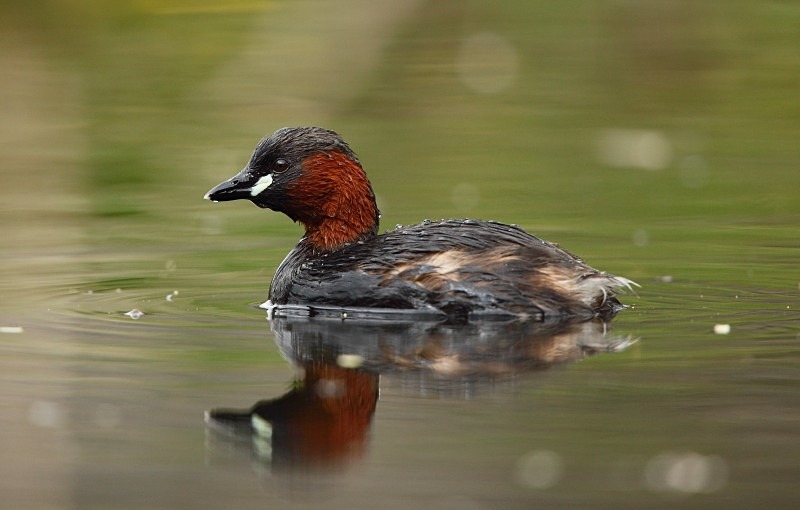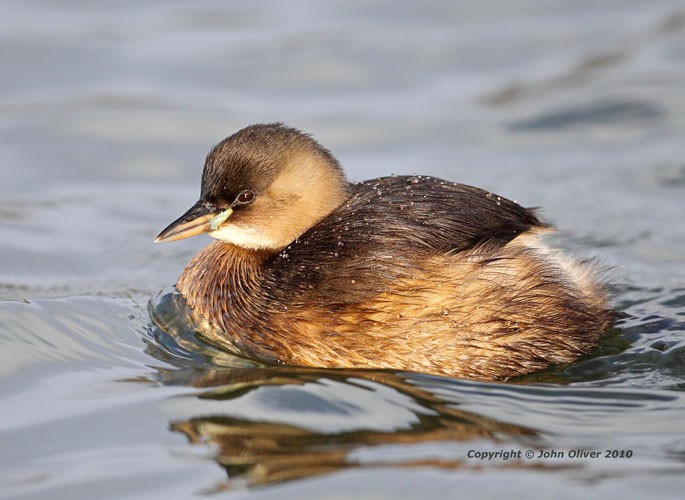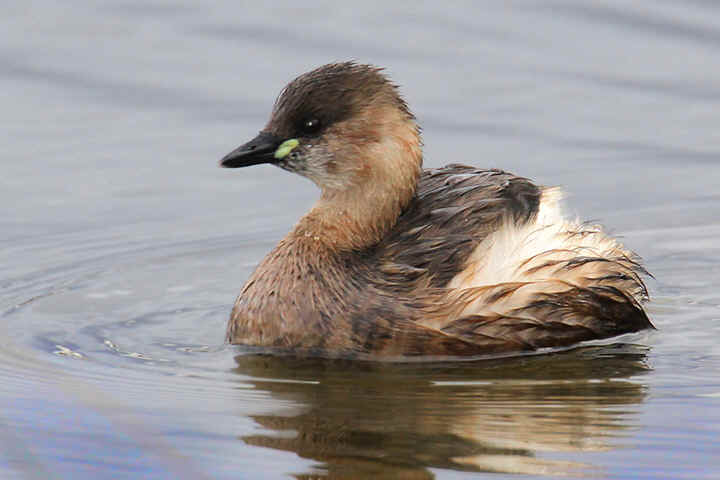
Tachybaptus ruficollis
TAXONOMY
Colymbus ruficollis, Pallas, 1764, Holland. Nine subspecies.
OTHER COMMON NAMES
English: Common grebe, red-throated little grebe, dabchick;
French: Grиbe castagneux; German: Zwergtaucher; Spanish:
Zampullнn Comъn.
PHYSICAL CHARACTERISTICS
9.8–11.4 in (25–29 cm); 0.26–0.53 lb (117–241 g). Adult breeding:
breast, chin, lores, cap and rest of upperparts blackish,
cheeks, throat and side of neck rufous. Sides and flanks dusky
more or less washed with rufous, belly variable according to
subspecies, ranging from silvery white to black. Most forms
have no white in wing, some a small patch on inner secondaries.
Bill black-tipped white and with pale yellow wattle at
base, eyes red in most of range, yellow in east Asia. Nonbreeding
dull brownish, throat and belly whitish, immature
similar but with striped neck.
DISTRIBUTION
T. r. ruficollis: Europe and northwest Africa; T. r. iraquensis:
Iraq and southwest Iran; T. r. capensis: Africa south of the Sahara,
Madagascar, Caucasus and eastwards through India to
Myanmar; T. r. poggei: southeast and northeast Asia; T. r.
philippensis: northern Philippines; T. r. cotabato: southeast
Philippines; T. r. tricolor: Sulawesi to north New Guinea; T. r.
vulcanorum: Java to Timor; T. r. collaris: northeast New Guinea
to Solomon Islands.
HABITAT
Mostly small and shallow lakes and ponds, but also along vegetated
shores of larger lakes. When not breeding, sometimes on
more open water, rarely on coast.
BEHAVIOR
Pairs may reside on the same pond all year, but non-breeding
birds may assemble in loose groups of 5–30, occasionally hundreds.
FEEDING ECOLOGY AND DIET
Usually feeds within 3.3 ft (1 m) of surface, often just peering
and picking with head and neck under water or picking from
the surface. Diet variable, but mainly insects. Also takes small
fish and, unlike most grebes, substantial numbers of snails.
REPRODUCTIVE BIOLOGY
Courtship display poorly developed and partly replaced by vocal
duetting given with remarkable synchrony. Eggs 2–7, usually
4; often two, sometimes three broods a year. Incubation
20–25 days, young stay in nest for a week and can fly when
44–48 days old. They sometimes help feed older siblings.
CONSERVATION STATUS
Not threatened. Widespread and generally common.
SIGNIFICANCE TO HUMANS
None known.
Photo Gallery of - Little grebe




 Animalia Life
Animalia Life